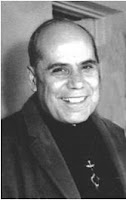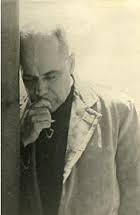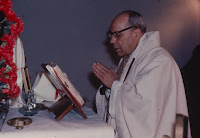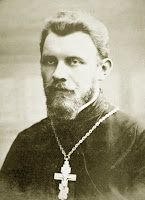URGENT HELP NEEDED (From Website of the MONKS of NORCIA)
"Et ecce terraemotus factus est magnus"! Behold there was a great earthquake!
This Easter antiphon refers to the convulsions of the earth at the moment of Christ’s resurrection from the dead. The Gospel mentions an earlier earthquake at the moment of Our Lord’s death on the cross. An earthquake means both death and life: death to what went before, life in new beginnings. Sometimes such a disaster means physical death, as for the 300 people who died in Amatrice and Accumoli, small towns just across the mountains from Norcia. In Norcia, thanks be to God, no lives were lost. The monastic buildings were severely damaged and some of the monks have been sleeping in tents, but in this we are like so many of our neighbors.
 |
| Monks Praying Outdoors |
Monks make a vow of stability, which includes love of the place. We love this place, and so we are committed to rebuilding. Natural disasters have a way of bringing us back to the essentials. The St. Bartholomew earthquake (August 24th) changed our interior landscape and made us look at our present reality with fresh eyes. Just as the resurrection of Christ made all things new, so this earthquake presents the monastery with new opportunities to strengthen our monastic foundations and build more securely for the future. The monastic presence in Norcia is extremely important for the identity of the town, so rebuilding the monastery means giving new life to a town that finds itself sorely tried. Our neighbors count on our solidarity, both spiritual and material. Our rebuilding efforts are directed to two monastic sites in Norcia: one at the Basilica of San Benedetto, the other at San Benedetto in Monte. We humbly ask that you participate by making a financial contribution to this project, which will deepen the monastic roots in Norcia (a town of about 5,000, with over 50,000 visitors a year) and help bring hope to the people and region.
 |
| Daily Masss Said in a Tent |
BASILICA OF SAN BENEDETTO The restoration of the basilica built atop the historic birthplace of St. Benedict. No area of the campaign is more important than the basilica of San Benedetto, the birthplace of St. Benedict and his twin sister St. Scholastica. Many people from around the world had already begun participating in the monks’ efforts to beautify the 14th-century Basilica. Thanks be to God, those projects are mostly safe, but the earthquake seriously weakened parts of the church. Vaults need reinforcing, the cupola (dome) needs to be solidified, cracks in the ancient walls need steel bracing. Funds raised will also be used to complete the work of restoration of the side altars already begun and to improve lighting and heating issues which have plagued the building for years.
MONASTERY OF SAN BENEDETTO The restructuring of our monastery in town, where we are a monastic presence to pilgrims and tourists from around the world.
Monks have acted as custodians of this holy place since at least the 12th century. The monastery has two parts. While the 14th-century building attached to the basilica received less damage from the earthquake, the 1960’s era structure which housed the novitiate has been declared unlivable by the civil protection agency. The insides will have to be gutted and re-built. Funds raised will also cover repair costs of the gift shop, library and kitchen which all saw damage to their vaults. We hope that part of this building can be used as the focus of our apostolic and cultural labors on behalf of the many pilgrims who come to Norcia.
 |
| Rebilding Began Immediately |
MONASTERY OF SAN BENEDETTO IN MONTE The rebuilding of our monastery overlooking Norcia so that we can grow, planting the deep roots of our community in the soil of this agricultural grange. Our friends will recall that restoration work was proceeding on the church of our monastic grange, the property outside the walls, three km from Norcia, which we have long desired as a place of retreat and agricultural work. For many years we have pondered how to accommodate a growing community in the restricted space of the monastery in town. The earthquake has inspired us to re-visit this question, and the community has decided that the time has come to develop the monastery on the mountainside –San Benedetto in Monte. We began restoration of the church two years ago, though the interior was not complete. It resisted the earthquake fairly well, but the façade suffered damage. When we purchased the property in 2007, much of the building had already collapsed from previous earthquakes. The 2016 earthquake finished the job. This means the monastery section must be completely rebuilt, so that it is large enough to house 40-50 monks. The juniors and novices are already camping on the mountain side in tents and pre-fabricated buildings in the hopes of a more-permanent dwelling place. They are already enjoying the silence and solitude of San Benedetto in Monte. Despite the rustic conditions, the environment is wonderfully favorable to prayer and contemplation and we believe it will offer the best environment for monastic life in Norcia to flourish.
 |
| Sleeping in Tents |
THE BREWERY The construction of a permanent home for our brewery operation, ensuring that, come what may, we can always live by the work of our own hands.
The brewery was already giving 10% of its profits to charity. Now, after the earthquake, we have changed that to 15%. We will also be giving a portion of all funds raised to the people of this town, for whom we pray and intercede, as a material means of lessening their hardships.
GO TO THEIR SITE: NORSIA.ORG/EARTHQUAKE
Checks can be sent to:
THE MONKS OF NORCIA FOUNDATION
% FATHER MARTIN BERNHARD, OSB
























































